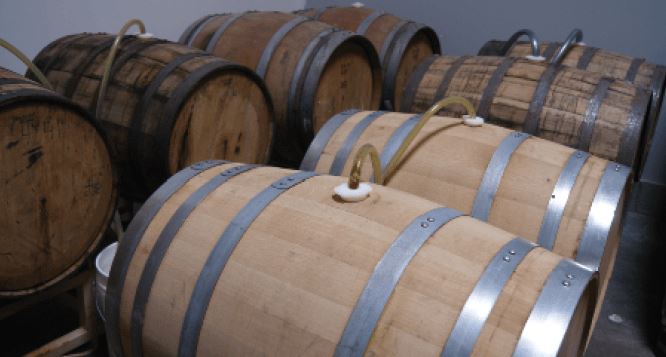Brewing barrel-aged homebrew is an art that requires precision and patience. Elevate your craft by exploring the best practices for blending these exquisite creations. From selecting barrels to achieving the perfect balance, this guide will walk you through the steps of creating barrel-aged homebrews that leave a lasting impression.

Selecting the Right Barrels
The foundation of exceptional barrel-aged homebrews lies in the selection of the right barrels. Opt for barrels that have previously held spirits such as bourbon or whiskey. The residual flavours from the spirits infuse into your brew, imparting a rich and nuanced complexity. This initial step sets the stage for a homebrew with depth and character.
Pro Tip: Choose barrels that previously housed spirits like bourbon or whiskey for an added layer of complexity and depth in your barrel-aged homebrews.
Understanding Barrel Characteristics
Each barrel contributes distinct characteristics to the ageing process. Pay close attention to the flavours and aromas extracted from the wood and the spirits. Some barrels may offer notes of vanilla, while others impart hints of caramel or oak. Understanding these nuances is crucial for a thoughtful blending process that harmonizes the various elements in your barrel-aged homebrews.
Pro Tip: Take note of the specific flavours and aromas inherent in the chosen barrels; this knowledge will guide your blending process.
Timing the Aging Process
Ageing is a critical phase in barrel-aged homebrews, and timing is everything. Experiment with varying durations to discover the optimal ageing period for your specific brew. Regular tastings during the ageing process allow you to track the evolution of flavours. This hands-on approach ensures that you can tailor the ageing time to achieve the desired complexity in your homebrew.
Pro Tip: Experiment with different ageing durations to find the sweet spot for your desired flavour profile. Frequent tasting is key to gauging the evolution of your homebrew.
Blending for Balance
Blending is an art in itself. Begin with small blending trials, mixing different barrels to assess their compatibility. Adjust the ratios incrementally until you achieve the desired balance of flavours. This gradual approach prevents the risk of overpowering the palate and allows for a nuanced and well-rounded final product.
Pro Tip: Start with small blending trials and adjust ratios incrementally. This gradual approach helps you find the perfect balance without overwhelming the palate.
Incorporating Wild Ales for Complexity
To elevate the complexity of your barrel-aged homebrews, consider incorporating wild ales into your blending arsenal. These spontaneous fermentations introduce unpredictable and unique elements to the mix. The wild yeast strains contribute a spectrum of flavours that can enhance the overall character of your brew, making it a standout among barrel-aged creations.
Pro Tip: Introduce wild ales into the blending process to add layers of complexity. These spontaneous fermentations can bring unique and unpredictable elements to your barrel-aged homebrews.
Quality Control through Sampling
Maintaining quality control is essential throughout the blending process. Regularly sample each barrel to ensure consistency and identify any potential issues. Addressing concerns early on allows for corrections, ensuring that the final blend meets the high standards set for your barrel-aged homebrews.
Pro Tip: Regularly sample each barrel to ensure consistency and identify any undesirable characteristics. Addressing issues early in the process is key to producing a high-quality final blend.
Experimenting with Barrel Combinations
Unleash your creativity by experimenting with different combinations of barrels. Document your findings meticulously, creating a library of successful blends for future reference. This approach not only adds excitement to your brewing process but also contributes to the development of a signature style for your barrel-aged homebrews.
Pro Tip: Embrace experimentation by trying various combinations of barrels. Document your findings to create a library of successful blends for future reference.
Conclusion
In conclusion, mastering the art of blending barrel-aged homebrews is a journey that combines science, patience, and creativity. By following these best practices, from selecting the right barrels to experimenting with wild ales and achieving a harmonious balance, you elevate your brewing skills to new heights.
